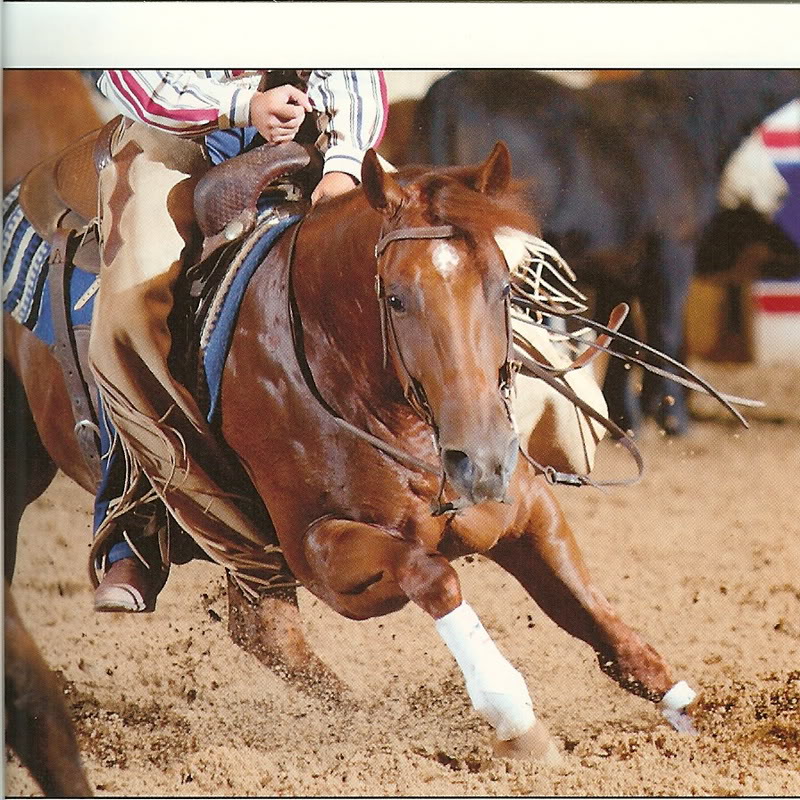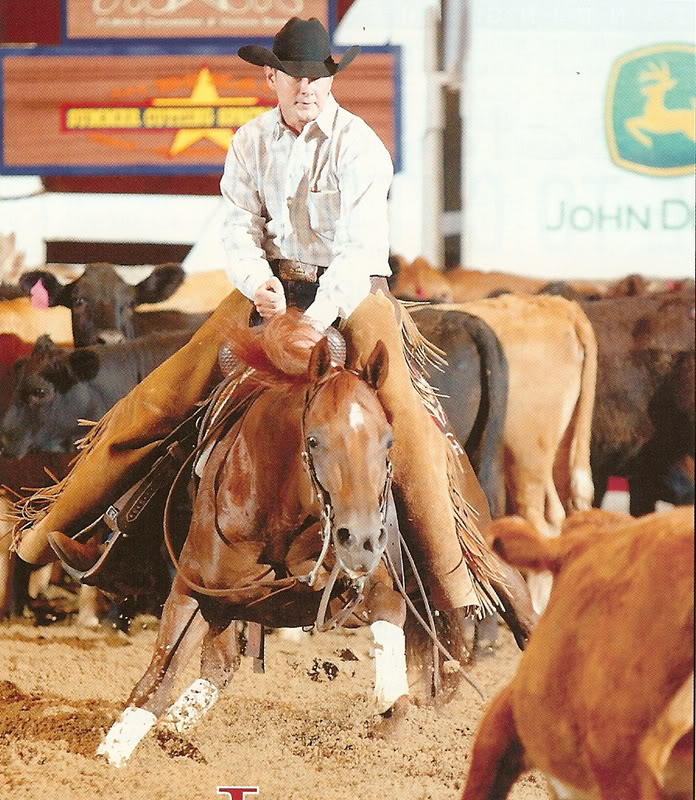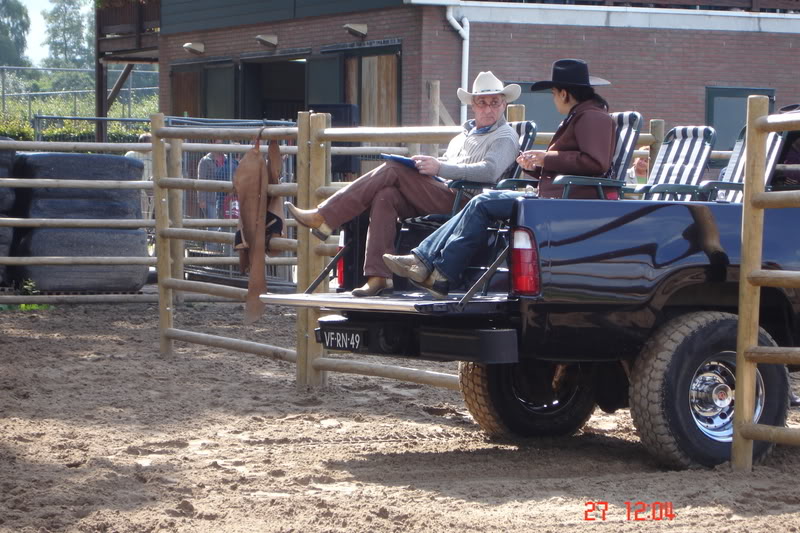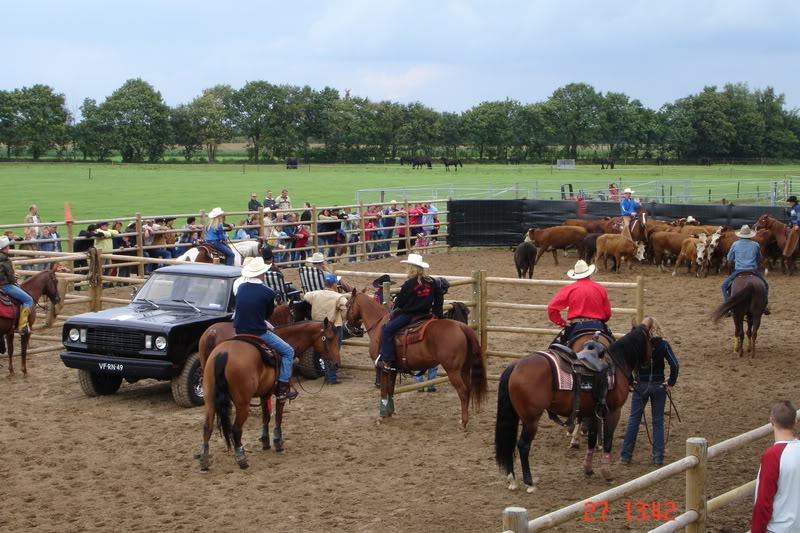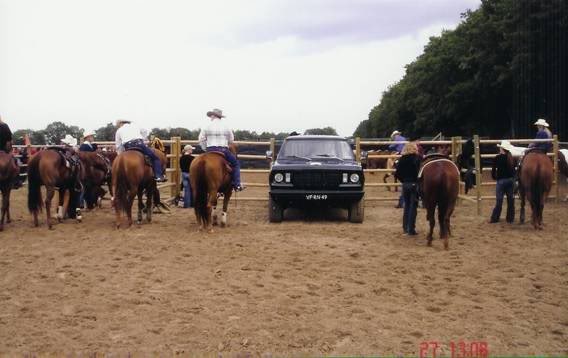Introduction:
Leon walked the mare named Smart Date back inside the warmup ring to one end of the arena. A herd of cattle was being settled at the other end, and the cutting would begin in about 30 minutes. The cattle, all yearling heifers, were chosen for their uniformity in weight and size. The first 11 cutters would work this herd, then a fresh bunch of cattle would be brought in for the remaining 12 cutters. Five judges, secluded from each other and from the scoreboard, would scote each cutter from 60 to 80 points. The best-scoring cutter would win first place.
When horse and rider enter the herd to separate one cow from the others, and the rider drops his rein hand to the horse’s neck, what happens next is largely up to the cow and the horse.
People get hooked on riding cutting horses, and watching them work, when they discover that cutting is exhilarating and fun to do. Beyond that, it is an equine sport with roots as a ranch chore – sorting cattle in the open for various reasons – and it has been likened to an art form. The horse becomes a willing, thinking athlete, in partnership with the horseman, who is simply along for the ride. At its best, the partnership works like this: the horse cuts whatever cow the rider selects, and then prevents the cow from getting back to the herd by mirroring its moves, left and right – by running, stopping, reversing directions – all on a loose rein. Ideally, the horse will completely control the cow in the center of the arena. In return for all the horse does, the rider basically has to maintain a good seat in the saddle, and stay out of the horse’s way, not hinder his movements.
As a team, horse and rider have 2 ½ minutes to work in front of a judge, or judges, and they’ll typically cut and work one cow, then go back into the herd to cut a second cow, and sometimes a third cow. A cutter is penalized for mistakes, like letting a cow that’s being worked slip by and get back to the herd, or for visibly cueing the horse, like raising the rein hand while a cow is being worked.
The cutter has four helpers, all horseback, while he is working in the arena. A herd holder is stationed on each side of the herd to prevent the cattle from moving up the fence. And two turnback riders are positioned farther out in the arena to encourage the cow that is being worked to not simply run off to the far end. At any contest, whether the cattle are fresh (have never before been used in cutting) or not, the cutter wants to try to select a cow (or calf – the terminology is interchangeable, but the animals are typically yearling or two-year-old steers or heifers) that hasn’t been cut by another contestant. The more that cattle are cut, the more they tend to simply run while being worked, or just give up and not move, rather than test the horse in the middle of the arena, where the best scores are earned.
At the Futurity finals, Leon Harrel and Smart Date had drawn up to cut last in the first section. That meant ten other cutters would go before them. One of Leon’s herd holders had placed himself where he could watch the cattle, and when Leon rode into the herd for his first cut, clock running, the man pointed out a cow that hadn’t been worked. Leon took his time, going deep into the herd and bringing the cow out with a bunch of others; slowly the cattle flowed back around on both sides, returning to the others, and Leon maneuvered carefully and quietly until the last calf in front of him was the one he wanted. Then he lowered his rein hand, and Smart Date dropped her head and went to work.
The performance on that cow lasted well over 40 seconds, an incredibly long time, and it was the type of run that cutters dream about. The cow surely tested the mare’s ability, darting back and forth, pressing to get closer to the herd. Smart Date responded to the pressure by working even lower to the ground. At one point the cow stopped, completely mesmerized by the mare whose hindquarters quivered in anticipation. The mare forced the action by breaking into a rapid two-step, side to side.
The crowed was screaming, shouting, whistling, applauding at that point. The cow gave up and turned away. Leon raised his hand, lifting up the reins to take her off the cow. There were about 20 seconds left on the scoreboard clock, and he quickly skimmed another cow from the edge of the herd and was working when the buzzer sounded. The audience was wild with enthusiasm.
A western horseman book
CUTTING
by Leon Harrel
Introductie:
Cutting bestaat al heel lang … sinds begin jaren 1800. Een koe van de kudde af te scheiden, was noodzakelijk om het geïsoleerde rund te kunnen voorzien van medicatie tegen besmettelijke ziekten of om het te brandmerken.
Hiertoe werd gebruik gemaakt van speciaal gefokte en getrainde paarden die in staat moesten zijn ‘de koe te kunnen lezen’ (cow sense). Midden jaren 1800 hielden cowboys onderling wedstrijden om uit te maken wie het beste cutting paard had en dit werd in de loop der jaren dusdanig populair, dat begin jaren 1900 van een heuse sport kon worden gesproken. Het werd zelfs zo populair en het aantal deelnemers groeide dusdanig snel, dat het noodzakelijk werd spelregels op te stellen. In 1946 resulteerde dit in de oprichting van ‘The National Cutting Horse Association (NCHA)’.
There’s no better friend than a horse that’s saddled and ready to go
Tegenwoordig is cutting een opwindend en spectaculair onderdeel binnen de Westernriding sport, zowel om te doen als om naar te kijken. Er zijn duizenden beoefenaars over heel de wereld, zowel mannen als vrouwen.
Wat zijn de elementen van de cuttingsport? Wel, deelnemers hebben 2.30 minuten de tijd om – met inachtneming van strenge spelregels – zoveel mogelijk koeien van de kudde af te scheiden en deze het terugkeren naar de kudde te beletten, normaliter is deze tijd voldoende om twee à drie koeien te ‘werken’. De tijd begint op het moment dat de combinatie de koe van de kudde heeft afgezonderd.
De ruiter brengt zijn paard zo diep mogelijk in de kudde – zonder deze te verstoren – en selecteert een koe, die uit de kudde naar het midden van de arena wordt gedreven. Als de koe eenmaal van de kudde is geïsoleerd, legt de ruiter één hand met de teugels neer en houdt zich met de andere hand vast aan de zadelknop. Een goed getraind cutting paard weet op dat moment precies dat het zijn taak is te voorkomen dat de koe teruggaat naar de kudde welke daartoe op allerlei manieren langs het paard probeert te glippen. Het paard moet daarbij op een bepaalde afstand van de koe blijven. Alleen dan, wanneer de koe van het paard wegloopt of volledig stilstaat, mag de ruiter weer de controle van het paard overnemen en kan de koe naar de kudde terugkeren. De ruiter gaat de kudde weer in, selecteert en isoleert een nieuwe koe; dit mag maar drie keer gebeuren tijdens de proef.
Het kost punten wanneer het paard de koe laat ontsnappen of wanneer de ruiter het paard instructies of aanwijzingen geeft. Het paard moet namelijk zelfstandig werken. De trainingen en intelligentie van het paard maken dat het de gedragingen van de koe nauwlettend in de gaten houdt.
De sport verbreidde zich ook naar Europa: Italië, Duitsland, België, Frankrijk en Nederland. ‘The National Cutting Horse Association of the Netherlands (NCHAN)’ werd in 2001 opgericht. Zij organiseert ‘The Low Land Cutting Tour’: cuttingwedstrijden in België, Duitsland en Nederland. Nieuwsgierig? Kijk op hun site voor de agenda waar wedstrijden worden verreden.
Na 15 jaar actief in de Reining sport te zijn geweest (waarna ik mijn American Quarter Horse heb verkocht en niet meer actief ben in de sport) ben ik in aanraking gekomen met deze andere tak van westernriding via Bob Aupers van de Trapper Ranch. Dankzij Bob kan ik mijn 2 hobby’s combineren. Wat is er dan mooier om de W200 in de arena te hebben staan tussen de cuttingruiters en het vee met een echte Amerikaanse jury in de bak van mijn pick-up truck!
When a running horse gets to the edge of a caynon, it’s too late to say “Whoa!”
Link ncha cutting
